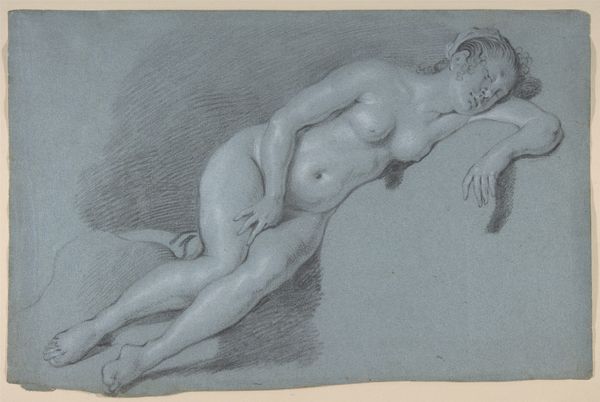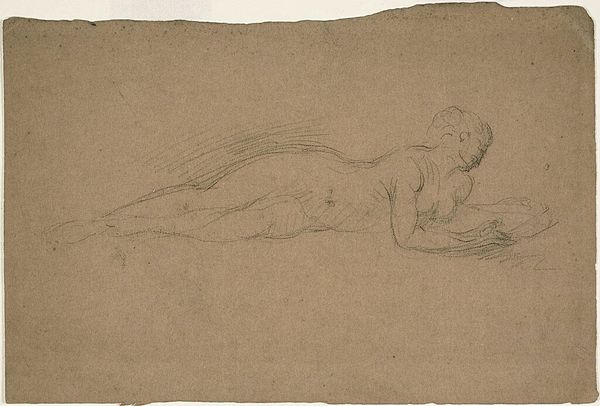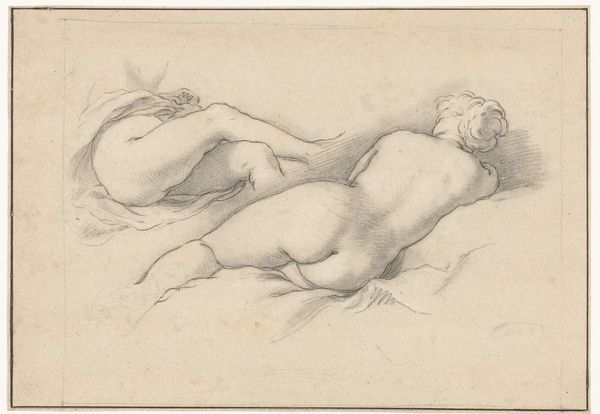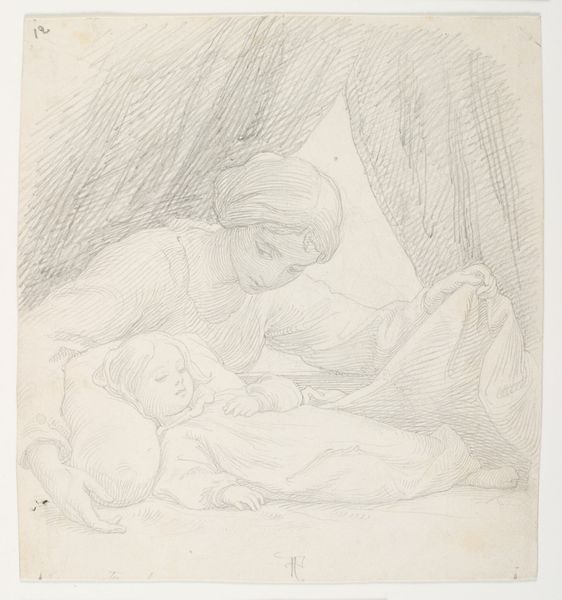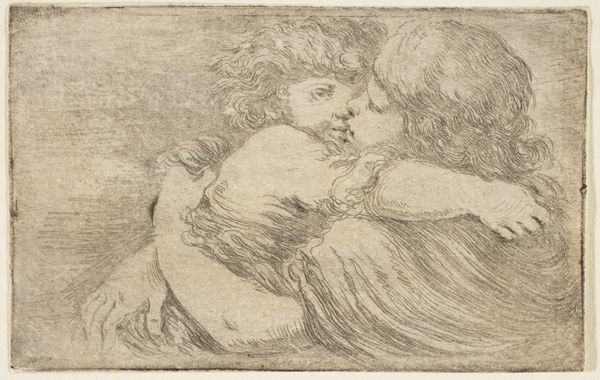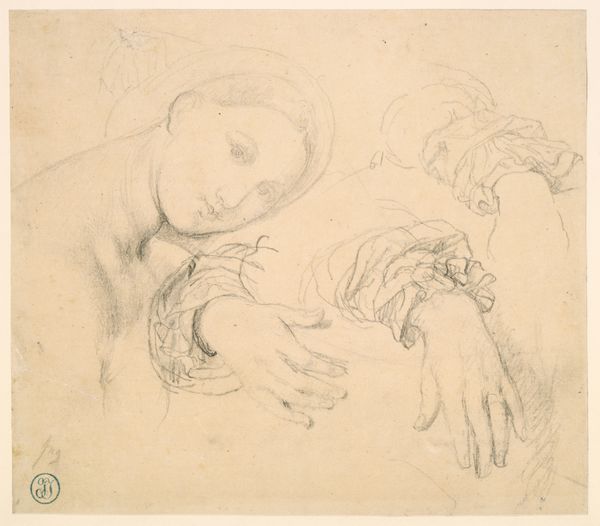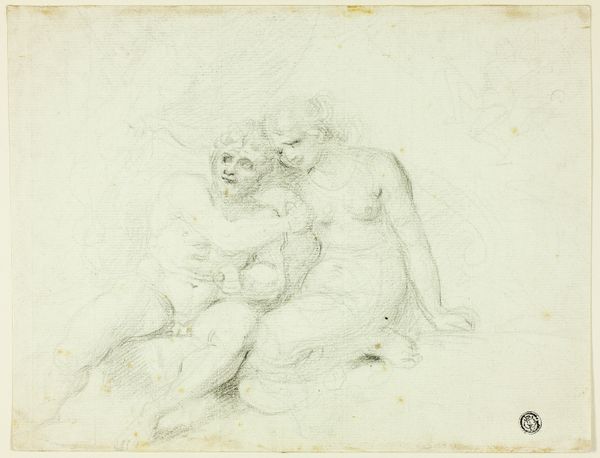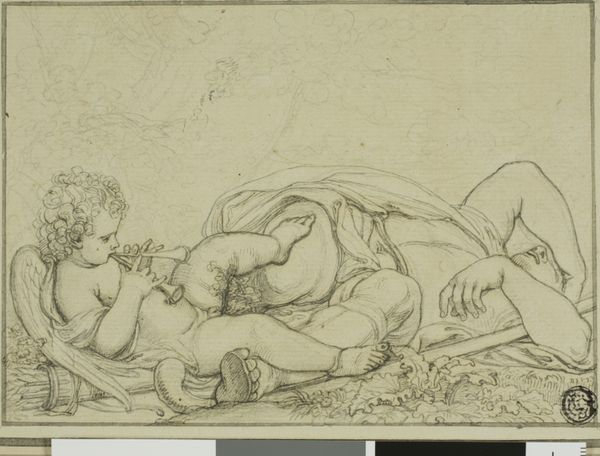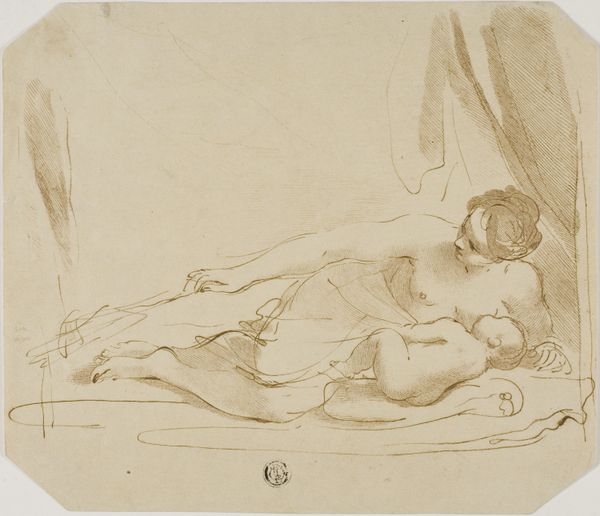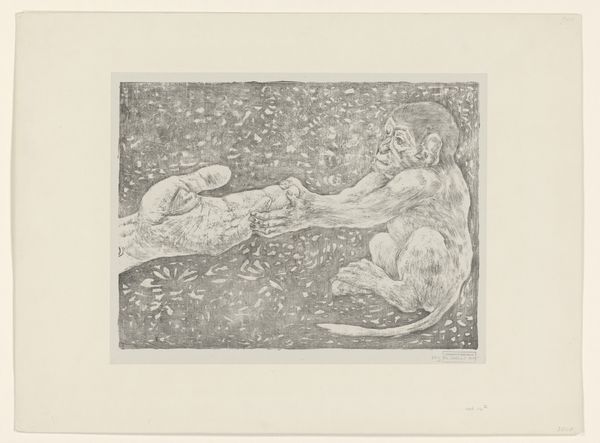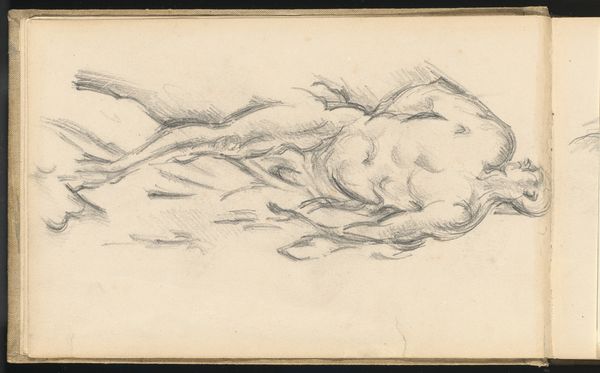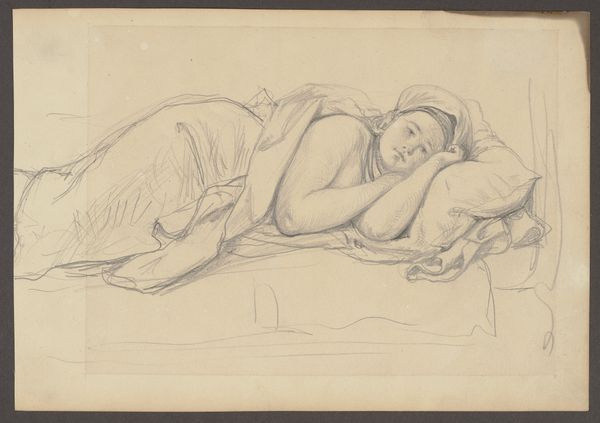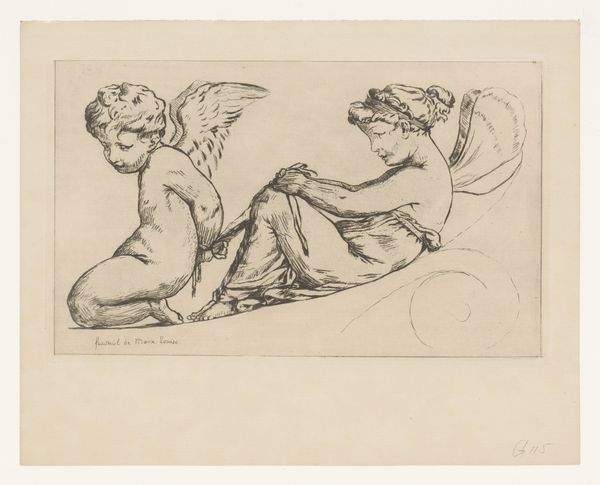
drawing, lithograph, print, paper, pencil
#
portrait
#
drawing
#
ink drawing
#
lithograph
# print
#
classical-realism
#
figuration
#
paper
#
pencil
Dimensions: 285 × 178 mm
Copyright: Public Domain
Editor: Here we have John Flaxman's "Figures," a pencil drawing from around 1817. It's currently housed at the Art Institute of Chicago. The somber figures immediately evoke a sense of sorrow and contemplation. What do you see in this piece, especially considering the historical context? Curator: It strikes me as a potent reflection on the body as a site of both vulnerability and resilience, typical of Flaxman’s classicism. Consider the time it was created. Post-Enlightenment Europe, rife with social and political upheaval after the Napoleonic wars. The reclining figures, rendered in such a raw, almost unfinished state, can be read as embodiments of exhaustion and disillusionment with grand narratives. Do you see hints of resistance in their positioning? Editor: Resistance? I hadn’t considered that. They seem so defeated. The way they are huddled together suggests more of a shared grief, or maybe just a seeking of comfort. Curator: Precisely. And whose grief is deemed worthy of representation? Flaxman often drew from classical mythology, which frequently elided the suffering of marginalized voices, specifically those of women and enslaved populations. By presenting these unidealized bodies in this vulnerable state, isn't he implicitly asking us to reconsider who bears the burden of societal trauma, and who is traditionally excluded from the heroic narrative? Editor: So, you are saying that, while appearing to depict figures from classical antiquity, the artwork uses this classical aesthetic to offer a critique of power and representation in Flaxman’s contemporary society? It pushes us to look beyond idealized forms to consider the societal context of human suffering? Curator: Exactly. Art constantly invites us to renegotiate history. How does our present shape how we view art history? Editor: That makes me look at it in an entirely new way! Curator: That is the power of context. The point isn't just to see what's on the page, but also the world it reflects and, perhaps, the world it seeks to change.
Comments
No comments
Be the first to comment and join the conversation on the ultimate creative platform.
